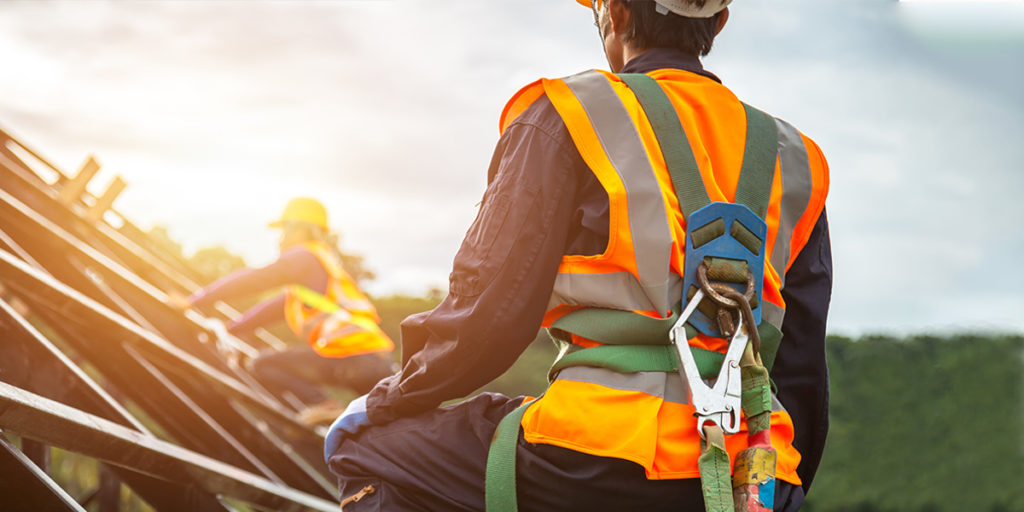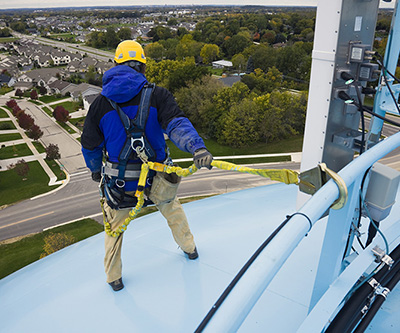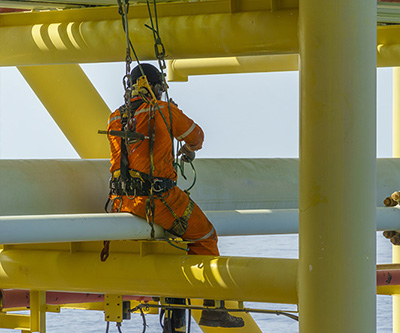Fall Prevention Plans
Posted: Nov. 12, 2019 • By Kevin Kohler

Tragic consequences of a fall from height
A Chilliwack Progress news story from January 2019 is just one example of the fatalities and injuries that occur all too often to workers working at heights. In this case, a young BC worker fell to his death, between gaps in metal roofing, to the concrete slab 14 metres (56 feet) below.
The news story reported that a WorkSafeBC Incident Investigation Report (IIR) found that the young worker who fell to his death “wasn’t wearing fall protection, safety procedures weren’t followed… and he was not being supervised.” The IIR also found that “… the company had no written fall protection plan, (and) the workers had minimal training, … when the incident occurred.”
Do falls from height happen all that often at work?

Tragically, they do. In the US OSHA reports that falls are the leading cause of death in construction and the Infrastructure Health and Safety Association reports that falls from heights are the major cause of death in Ontario workplaces.
Are we getting a handle on these incidents?
Not necessarily.
A 2018 study prepared by the Ontario Ministry of Labour examined the root causes of worker deaths in falls from heights. The three most common contributing factors to falls were:
- Lack of worksite instruction,
- Not wearing personal protection equipment (PPE), and
- Lack of falls training
The US Bureau of Labor statistics reports that “Fatal work-related falls to a lower level increased 26 percent from 2011 to 2016. The number of fatal falls to a lower level increased each year in this period except for 2015.”
What is a fall protection plan?
A fall protection plan is a comprehensive safety plan to protect workers who are working at a legislated height above a lower level, or who face an unusual risk of injury were they to fall to a lower surface.
Fall protection and fall protection plans are required by safety legislation at defined heights, by type of work and under specified circumstances. You should consult the legislation that applies to your work place and remember that you always have a duty of care to protect workers from injury.
What does a fall protection plan (FPP) include?

Using Alberta as an example, the OHS Code requires a written fall protection plan at a work site to specify:
- The fall hazards
- The fall protection system to be used
- The anchors to be used
- That clearance distances below have been confirmed as sufficient to prevent a worker from striking the ground or an object or level below
- The procedures used to assemble, maintain, inspect, use and disassemble the fall protection system, and
- The rescue procedures to be used if a worker falls and is suspended
A FPP must address all of the hazards and legislative requirements in sufficient detail.
Best Practices
When controlling hazards through a FPP follow the hierarchy of controls in the following order of preference, from most to least effective:
- Engineered controls such as guardrails or other barriers
- Fall restraint systems that prevent a person from stepping into a fall hazard
- Fall arrest systems that protect fallen workers from striking an object or surface
- Administrative work procedures if there is no other reasonable alternative and they are legally approved as a substitute
Training is an important component of fall protection and formal training may be required in some jurisdictions. Workers must be trained in the site specific fall protection plan that will be used and the plan must be readily available to them.
Related Articles

Contractor Management
Contractors are responsible for their own safety aren’t they? It’s not really that simple, consider what the National Safety Council […]
Read Article
Forklift safety
What are forklifts? We probably all would recognize a forklift when we see one but some other names are commonly […]
Read Article